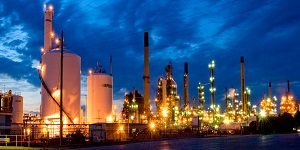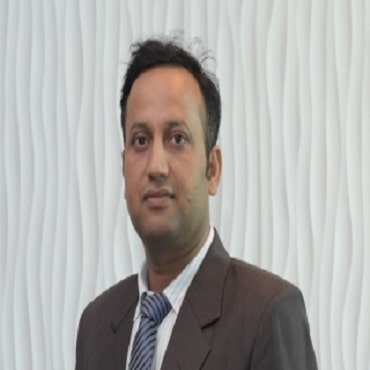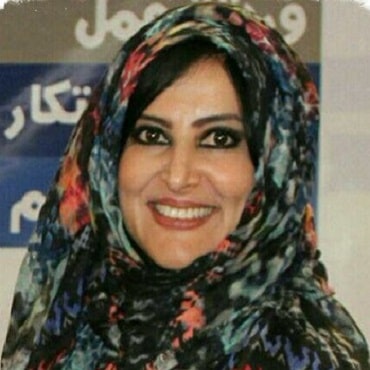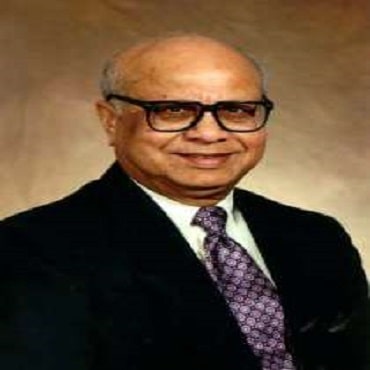
Power 2019

Theme: Advanced Technologies and Researches on Power & Energy Revolution
International Conference on Power Engineering & Smart Grid Technology will be held in Tokyo, Japan during November 18-19, 2019 Power 2019 is a specially designed cluster of program that provides a common platform where in industry meets academic to discuss recent issues happening. It serves as a bridge between researchers from academia and industry enhanced by its well organized scientific sessions, plenary lectures, poster presentations, world-class exhibitions, diverse symposiums, highly enriched workshops and back to back (B2B) meetings. It also facilitates better understanding about the technological developments and scientific advancements across the world by simultaneously equating with the pace of science, technology and business areas in the field of Power engineering & Smart grid Technologies. The relative novel nature of this conference is to bring the advancement in the field of utilization of natural resources, implementation of smart future technologies in power and energy revolution. We cordially invite all the participants interested in sharing their knowledge and research in the arena of renewable energy and environmental sciences
Why to Attend?
Power 2019 offers a fantastic opportunity to meet and make new contacts in the field of power & energy engineering by providing collaboration spaces and break-out rooms with tea and lunch by recognized global experts who are up to date with the latest developments in the Power and Energy field and provide a premier technical forum for reporting and learning about the latest research and development, as well as for launching new technologies, applications in power & energy engineering
Power 2019 Conference brings together directors, professors, professionals, CEOs, presidents, vice-presidents, business delegates, market leaders from allied industries and companies, Students and Researchers from all areas of Power engineering, Energy engineering, Electrical engineering, Mechanical engineering, chemistry, physics, and environmental engineering research and business.
Why in Japan?
Japan supports innovative and collaborative research on plastic engineering and biopolymers, and explores to build a sustainable research and education programs. our biopolymer congress is designed to attract the best training, research, and health care practitioners to Tokyo. The scope for research is broad, and will take full advantage of the extensive global network of expert faculty, researchers and educators.
Session 01: Power System & Engineering
Power system & Engineering is a subfield of electrical engineering that deals with the generation, transmission, distribution and utilization of electric power, and the electrical apparatus connected to such systems. Although much of the field is concerned with the problems of three-phase AC power the standard for large-scale power transmission and distribution across the modern world a significant fraction of the field is concerned with the conversion between AC and DC power and the development of specialized power systems such as those used in aircraft or for electric railway networks. Power Engineering also teaches us how power electronics system and renewable energy resources will improve and transform electric power systems.
- Thermodynamics
- Electrical Machines
- Onsite Renewables
- Onsite Power
Session 02: Power & Energy Market
In economic terms, electricity is a product which is capable of being sold, bought and traded. An electricity market is a system enabling through bids to buy, through offers to sell, purchases, sales and short-term trades, generally in the form of financial or obligation swaps. Discount dealings in power are normally settled and cleared by the market administrator. Market administrators don't clear exchanges yet regularly require learning of the exchange to keep up era and load adjusts. For most real administrators, there are markets for transmission blockage and power subordinates, for example, power prospects and alternatives, which are effectively exchanged. These business sectors created because of the rebuilding of electric power frameworks around the globe.
- Market Power and Market Strategies
- Regulation of Transmission and Distribution Systems
- Market Enabling and Enhancing Technologies
Session 03: Smart Grid Technologies
The Smart Grid Technologies signify an unprecedented chance to move the energy industry into a new era of availability, efficiency, and reliability that will contribute to the economy and environmental health. During the transition time, it will be critical to carrying out technology improvements, testing, development of standards and regulations, consumer education and information sharing between projects to ensure that the benefits we envision from the Smart grid become a reality. Smart grid technology is a collection of existing and emerging technologies. These technologies will increase efficiency in production, transport, and consumption, improve reliability and economic operation, integrate renewable power into the grid.
- Power Electronics System Simulation and Modelling
- Dynamic Optimization and Control
- Smart Appliances and Consumer Devices
Session 04: Sustainable Energy Technologies
Sustainable energy technology Produce renewable clean energy from sources such as the sun, the wind, plants, and water. According to the Energy Information Administration (EIA), in 2007, renewable sources of energy accounted for about 7% of total energy consumption and 9.4% of total electricity generation in the United States. Sustainable technologies permit us to generate electricity, cool and heat our buildings and to travel by sea, land and potentially also by air without producing dangerous greenhouse gases and other forms of pollution.
- Sustainable Infrastructure and Transportation
- Sustainable Electronics
- Alternative Energy
Session 05: Energy Economics and Policy
Energy Economics and Policy presents a unified analysis of energy economics and energy policy. This session deals with energy economics. It discusses the dimension of the energy problem, the role of energy in economic development, energy consumption patterns, energy supply, and oil prices. In dealing with the equilibrium of energy demand and supply, the session will present the environmental issues in energy development and the economics of pollution control. It will cite the efficiency of low-cost emitters that receive incentives to control more compared to high-cost emitters.
Session 06: Alternative Energy Technologies
Alternative energy is an energy source that is an alternative to fossil fuel. These alternatives are intended to address concerns about fossil fuels, such as its high carbon dioxide emissions, an important factor in global warming. Marine energy, hydroelectric, wind, geothermal and solar power are all alternative sources of energy. Before alternative energy becomes mainstream there are a few crucial obstacles that it must overcome. First there must be an increased understanding of how alternative energies are beneficial; secondly the available components for these systems must increase; and lastly, the pay-back period must be decreased.
- Smart Electric Power Alliance (SEPA)
- Intersolar
- Hybrid Energy Systems
Session 07: Clean and Green Energy
Green energy is an energy system that serves the requirements of the present-day without compromising the capability of future generations to meet their needs. Technologies promote green energy including green energy sources, such as solar energy, hydroelectricity, wave power, wind energy, bioenergy, geothermal energy, tidal power and similar technologies designed to progress the energy efficiency. Green energy comprises natural energetic processes which will be controlled with minute pollution. Small-scale hydro-power, geothermic power, wave power, periodic event power, anaerobic digestion, solar power, biomass power, wind power and a few styles of atomic power fits the green energy. World Health Organization could also be generating from renewable energy, fuel or nuclear sources.
- Hydro Green Energy
- Wind Green Power
- Biomass Green Power
- Solar Green Power
Session 08: Fuel Cell and Combustion Technologies
The atoms of the two gasses oxygen and hydrogen are put next to one another; they spontaneously combine to form water. This combination results in the release of a huge amount of energy and lets an electron to lose. In a fuel cell, the oxygen and hydrogen are separated by a membrane. The membrane captures the free electrons during the chemical reaction that forms water, which in turn powers anything hooked up to the fuel cell. It too releases little heat. Fuel cells are a remarkable power source. They store energy in two naturally occurring elements i.e., oxygen and hydrogen, and form a single waste product.
- Fuel Cell Systems and Applications
- Components and Supplying Technology
- Fuel Cell and Battery Testing
Session 09: Nano Environmental Technologies
Use of nanotechnology which combines the control of materials at nanometres to green intriguing standards is known as green nanotechnology. It correspondingly intimate to the utilization of the results of nanotechnology to upgrade conformity. Contagion from such assorted sources as oil and synthetic spills, pesticide and fertilizer overflow. Utilization of nanomaterials in assorted fields, for example, enhance the creation and clarifying of energies and decrease of exoneration from cars, endurance stockpiling (batteries and nano-empowered fuel cells), to give safe drinking water through enhanced water treatment, desalination, nano-empowered protection and outline of nano-materials for corruption distinguish and location.
- Nanotechnology in Energy Systems
- Green Nanotechnology
- Nanomaterials for Hydrogen, Fuel Cells & Thermal Energy
Session 10: Power Transmission & Distribution
Electricity is generated at power plants. It moves through a complex system, called the grid, of electricity substations, transformers, and power lines that connect electricity producers and consumers. Most of the local grids are interconnected for reliability and commercial purposes, forming larger, more dependable networks that enhance the coordination and planning of electricity supply. Generation, delivery, and utilization of electric energy and power are still one of the most exciting and challenging fields of electrical engineering. Amazing technological developments of our age are highly dependent upon a reliable, safe and economic supply of electrical energy. Power is passed over a transmission network of high voltage lines.
- Ultra High Voltage (UHV) Technologies
- HVDC and Flexible AC Transmission System
- Over-voltage, Lightning Protection, and Grounding
Session 11: Advanced Materials for Energy Storage
Energy Storage is the catch of endurance created at one time for use at a later time. Energy comes in assorted structures including radiation, compound, gravitational potential, electrical potential, power, raised temperature, comatose warmth and dynamic. Energy storage combines from frames that are hard to store to in other financially storable structures. Mass Energy stockpiling is ruled by hydroelectric dams, both customary and also pumped. The vitality isn't put away accurately; however, the work-result of consuming Energy (pumping ceaselessly warm) is put away, having the equitable impact on daytime utilization.
- EIA Directive
- The Role of EIA in Decision Making Process
- Procedures & Evaluation Methods
- National Procedures Efficiency
Session 12: Power Electronics
Power Electronics is the art of changing electrical energy from one form to another in a clean, efficient, robust and compact manner for convenient utilization. With reduced stresses on the motor, it consumes less power and corruption of the utility mains. In mobile sets power management IC's work as Power electronic principles, meant to handle limited milliwates, large linear audio amplifiers are rated at a few thousand watts. Often Power electronic converters operate from the utility mains are exposed to the disturbances associated with it. It is essential to protect both the control terminals and the main terminals. Power semiconductor devices are usually protected against voltage spike or over-voltage, over-current, gate-under voltage, overvoltage at the gate, excessive temperature rise, electro-static discharge.
- Mechatronics
- Power Electronics Devices
- Robotics
- Power Electronics in Aerospace and Space Applications
The Global Energy Landscape is changing. Traditional centers of demand are being overtaken by fast-growing emerging markets. The energy mix is shifting, driven by technological improvements and environmental concerns. More than ever, our industry needs to adapt to meet those changing energy needs fast as overall energy use and is likely to rise by more than two-thirds 2015 to 2035. In 2016, Nuclear power provides about 11% of the world's electricity and 21% of electricity in OECD countries. Renewable energy sources such as solar and wind are costly per unit of output and are intermittent but can be helpful at the margin in providing clean power. The World Health Organization (WHO) said that low- and middle-income countries in the South-East Asia and Western Pacific regions had the largest air pollution-related burden in 2012, with a total of 3.3 million deaths linked to indoor air pollution and 2.6 million deaths related to outdoor air pollution. Worldwide, WHO estimates indoor air pollution was linked to 4.3 million deaths in 2012 in households cooking over coal, wood and biomass stoves.
Power Engineering in USA:
Despite policy uncertainty, the U.S. remains the second-largest growth marketplace for renewables. the most drivers stay sturdy for brand spanking new onshore wind and star capacities, like multi-year federal tax incentives combined with renewable portfolio standards still as state-level policies for distributed star PV. Still, this uncertainty over planned federal tax reforms, international trade, and energy policies may have implications for the relative economic science of renewables and alter their enlargement over the forecast amount.
Power Engineering in Europe:
In the Europe Economic Community, renewable growth over the forecast amount is four-hundredth lower compared with the previous five-year amount. Overall, weaker electricity demand, overcapacity, and restricted visibility on forthcoming auction capability volumes in some markets stay challenges to renewable growth. Policy uncertainty on the far side 2020 remains high. If adopted, the new EU Renewable Energy Directive covering the post-2020 amount would address this challenge by requiring a three-year visibility over support policies, thereby raising the market’s foregone conclusion.
Power Engineering in Asia:
For the primary time, Renewables 2017 tracks off-grid star PV applications a lot of close in developing Asia and sub-Saharan Africa. Over the forecast amount, off-grid capability in these regions can nearly triple reaching over 3000 MW in 2022 from industrial applications, star home systems (SHSs), and mini-grids driven by government electrification programs, and personal sector investments.
Power Engineering Universities in USA:
- Penn State World Campus University Park, USA
- University of California, USA
- Massachusetts Institute of Technology, USA
- Oregon State University, USA
- Indiana University, USA
Power Engineering Universities in Europe:
- European University Madrid, Spain
- Royal Institute of Technology, UK
- World Scientific and Engineering Academy and Society, Germany
- Schneider Electric, France
- ULM University
Power Engineering Universities in Asia:
- Tianjin University, China
- Natioanl University of Singapore, Singapore
- Kyoto University, Japan
- Tokyo Institute of Technology, Japan
- Seoul National University, South Korea
Power Engineering Companies in USA:
- Silver Springs Networks, USA
- Toshiba, USA
- S&C Electric Company, USA
Power Engineering Companies in Europe:
- Schneider Electric, France
- Rolls-Royce Power Systems, Germany
- Electrical Power Engineering Services, Uk
- Power Systems Ltd, Uk
Power Engineering Companies in Asia:
- Hitachi, Japan
- Tokyo Electrical Power Co Ltd, Japan
- Inter Power Engineering Pte Ltd, Singapore
- Husk Power Systems, India
- HBL Power Systems Limited, India
- Power System & Engineering
- Power and Energy Market
- Smart Grid Technologies
- Sustainable Energy Technologies
- Energy Economics And Policy
- Alternative Energy Technologies
- Clean and Green Energy
- Fuel Cell and Combustion Technologies
- Nano Environmental Technologies
- Power Transmission & Distribution
- Advanced Materials for Energy Storage
- Power Electronics
- Journal of Nuclear Energy Science & Power Generation Technology




















































































































